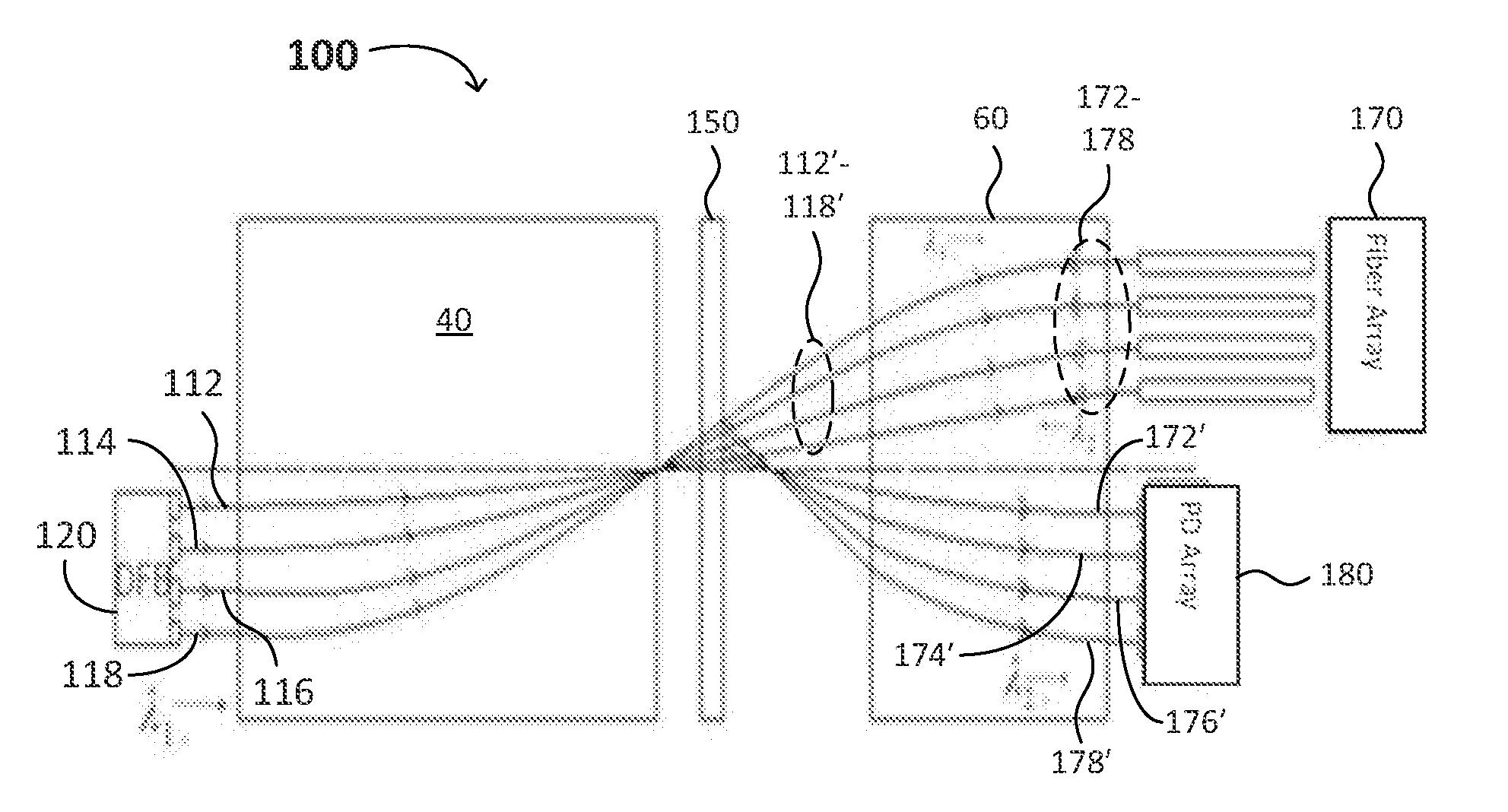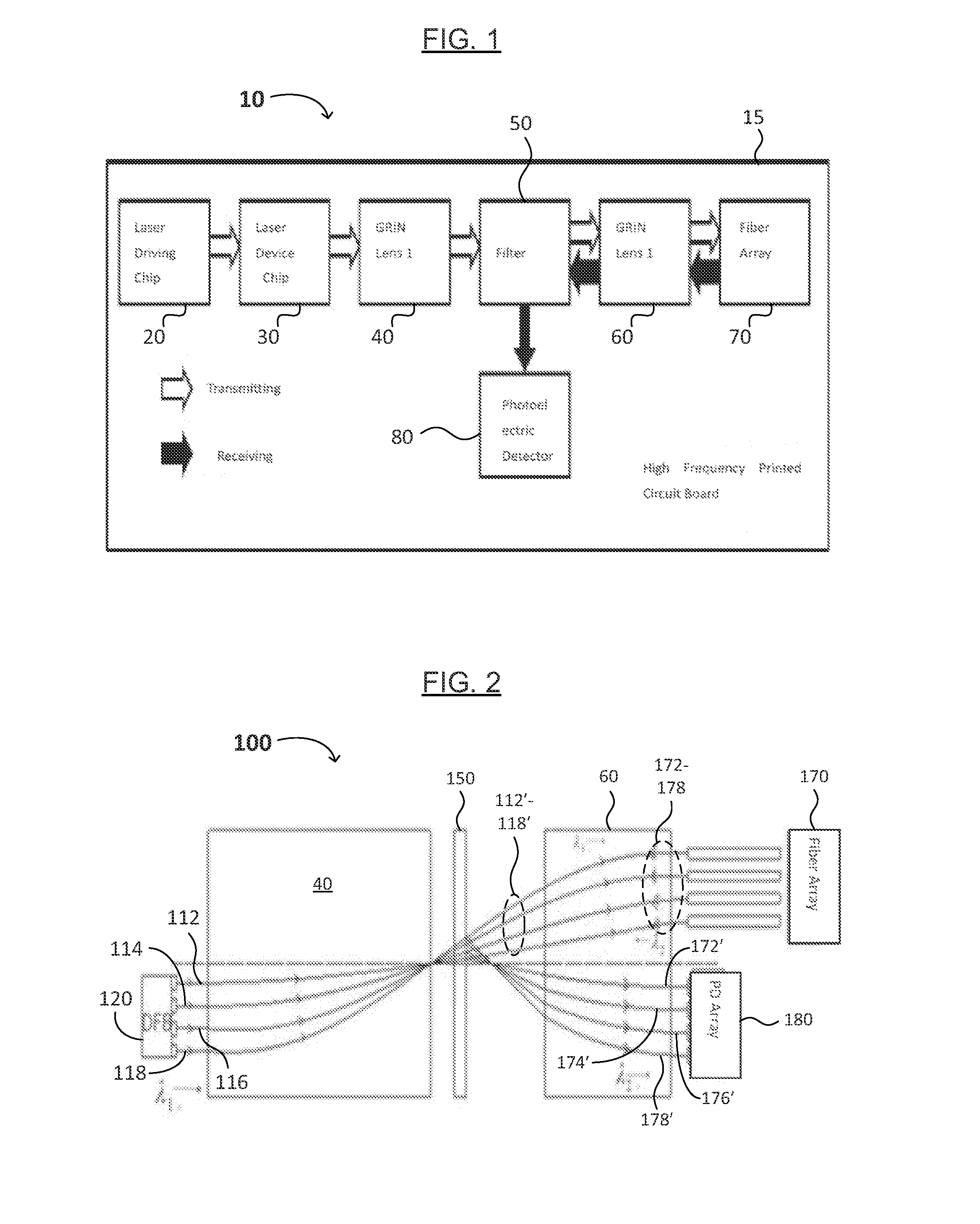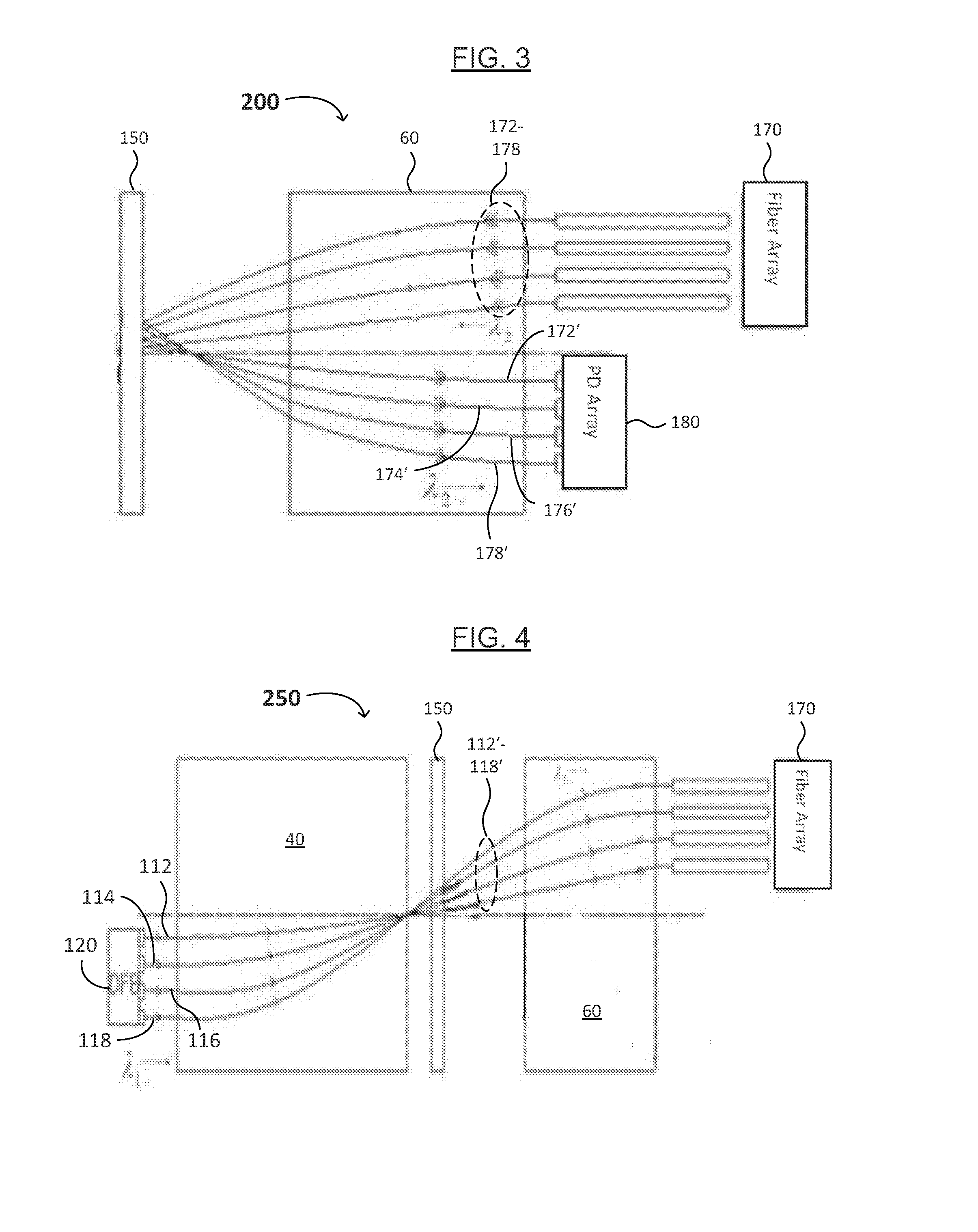NxN PARALLEL OPTICAL TRANSCEIVER
a parallel optical and transceiver technology, applied in electromagnetic transceivers, optical waveguide light guides, instruments, etc., can solve the problems of large loss(es) at 850 nm, difficult to overcome, and difficult design, etc., and achieve the effect of smooth light focus
- Summary
- Abstract
- Description
- Claims
- Application Information
AI Technical Summary
Benefits of technology
Problems solved by technology
Method used
Image
Examples
first embodiment
A First Embodiment
[0030]FIG. 2 illustrates an exemplary optical link 100 of the parallel optical transceiver (e.g., optical transceiver 10) in accordance with embodiments of the present invention. In the optical link at the transmitting end (e.g., the transmitter), laser beams 112-118 having the same wavelength λ1 are emitted from a plurality of (e.g., 4) DFB laser chips 120 at the same time (e.g., simultaneously). The laser beams 112-118 are first focused by the first GRIN lens 40, then they pass through a wavelength-selective band-pass filter 150. The multiple (e.g., 4) focused laser beams 112′-118′ are refocused by the second GRIN lens 60, then the refocused beams respectively enter the channels (e.g., 4 channels) in the fiber array 170.
[0031]In the optical link at the receiving end (e.g., the receiver), multiple (e.g., 4) laser beams 172-178 having the same wavelength λ2 from the four channels in the fiber array 170 are focused by the second GRIN lens 60 and reflected by the sur...
second embodiment
A Second Embodiment
[0036]FIG. 3 illustrates an exemplary optical link of the parallel optical transceiver in accordance with embodiments of the present invention. In the parallel optical transceiver, or as shown in FIG. 3, a receiver 200, 4 laser beams 172-178 having the same wavelength λ2 from the four channels in the fiber array 170 are focused by the second GRIN lens 60 and reflected by the surface of the wavelength-selective and / or bandpass filter 50, and then the 4 reflected laser beams 172′-178′ are refocused by the second GRIN lens 60 and enter the PD chip array 180. As above, in embodiments of the present invention related to a FP laser, the only difference is that each DFB laser chip is replaced by a FP laser chip, so there is no more tautology.
third embodiment
A Third Embodiment
[0037]FIG. 4 illustrates an exemplary optical link of the parallel optical transceiver in with embodiments of the present invention. In the parallel optical transceiver, or as shown in FIG. 4, a transmitter 250, laser beams 112-118 having the same wavelength λ1 emitted simultaneously from 4 DFB laser chips 110 are first focused by the first GRIN lens 40, then pass through the band pass filter 50, then the 4 laser beams are refocused by the second GRIN lens 60. After that, the beams respectively enter the 4 channels in the fiber array 170.
PUM
 Login to View More
Login to View More Abstract
Description
Claims
Application Information
 Login to View More
Login to View More - R&D
- Intellectual Property
- Life Sciences
- Materials
- Tech Scout
- Unparalleled Data Quality
- Higher Quality Content
- 60% Fewer Hallucinations
Browse by: Latest US Patents, China's latest patents, Technical Efficacy Thesaurus, Application Domain, Technology Topic, Popular Technical Reports.
© 2025 PatSnap. All rights reserved.Legal|Privacy policy|Modern Slavery Act Transparency Statement|Sitemap|About US| Contact US: help@patsnap.com



